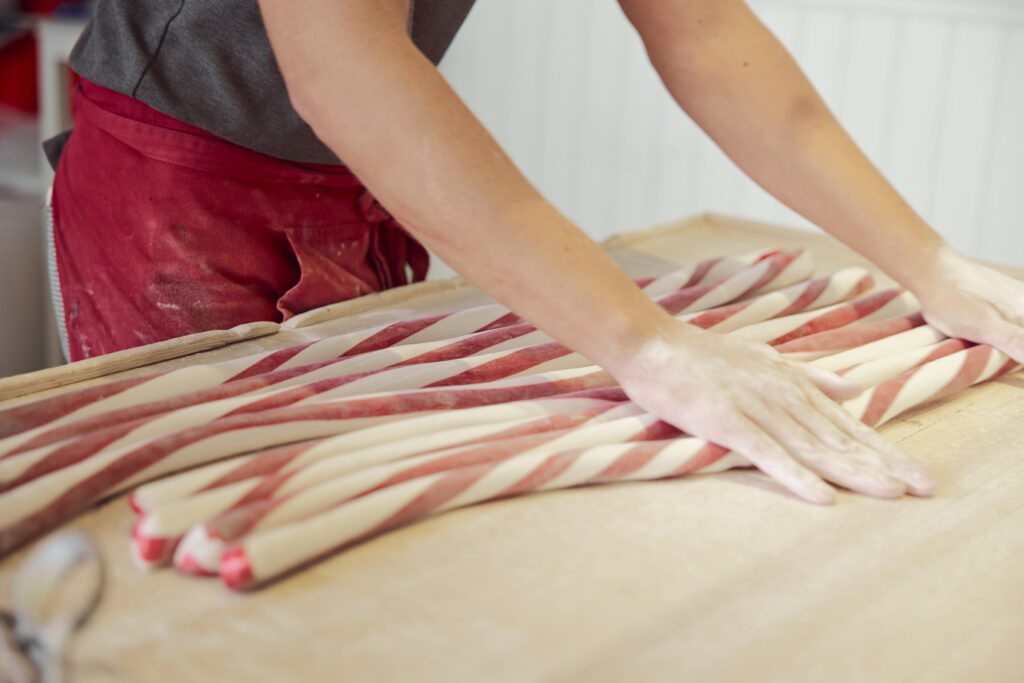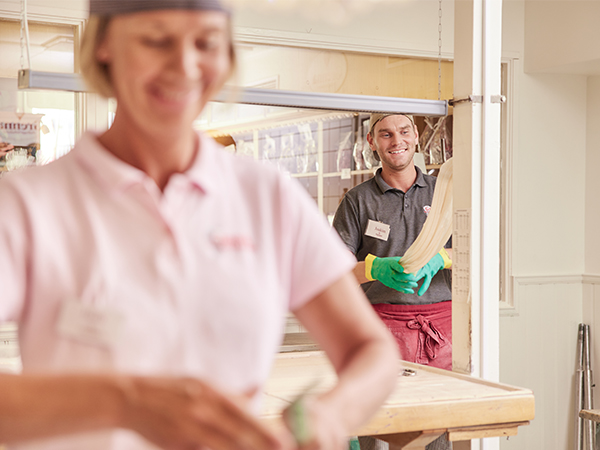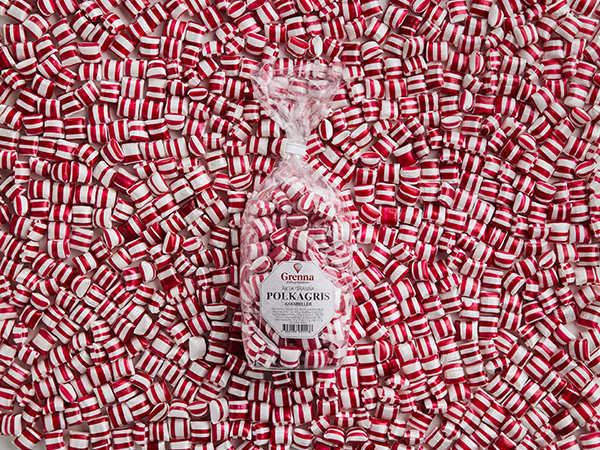The secret of craftmanship
To master the craft of making Polkagrisar you work as a trainee, often for several years.
Today, still after 160 years, the Polkagris is made almost exactly the same way in Gränna. A genuine Polkagris is made by sugar, water, vinegar and natural peppermint oil. How much of each ingredient used depends on, among other things, the weather and humidity.
This is how we do it:
The ingredients are mixed and boiled to 150º C. The hot mass is then poured out on a chilled table made of iron with cold water running inside it. Amalia used a table of marble. A little piece of the dough is coloured red. This piece will later become the red stripes.
When dough has cooled down to about 70 ºC, air is added into the dough. The air makes it white and porous. At first the dough is worked by hand and then the baker use a machine with automatic arms or a big hook on the wall, just like Amalia did in the nineteenth-century.
When the dough is ready, the baker moves it to another table made of wood to keep a steady temperature so the dough doesn´t cool too fast. Now he´s got about ten minutes to finish his work.

” Oh, it smells sweet and fantastic
inside the bakery! ”
A normal dough of 3,2 kilos becomes 64 pieces which all must have a single weight of 50 grams. Finally when they are finished the polkagris are placed on a rolling ground to roll for a while to cool. It is important that they roll so they get a round and nice shape. The quality is controlled when the Polkagris is wrapped in paper. The experienced eyes of the “inspector” can decide whether the Polkagris weighs between 47 and 54 grams. Others go to waste.
The Polkagris is now ready to be put in the shop or transported to our retailers around the world.




